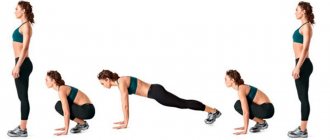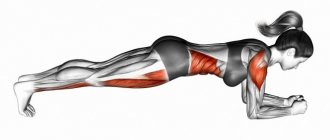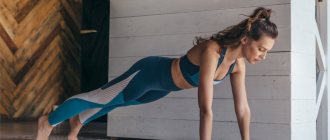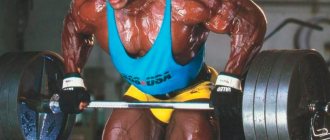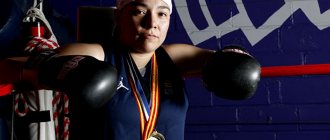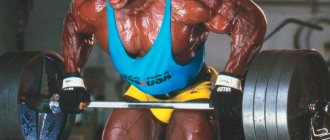Plyometrics are a combination of speed exercises for developing explosive strength that rely on rapid stretching and contracting of muscles. Plyometric training is aimed at the all-round development of the athlete: increasing his endurance, speed and muscle strength. At the present stage, plyometrics have become the basis of many training programs and are popular not only among professional athletes, but also among fitness enthusiasts.
Plyometrics was based on Soviet methods of training Olympic athletes, and became widespread in the United States back in the 80s. At first, plyometric training was popular only among professional athletes, but gradually this method was introduced into fitness programs due to its high effectiveness in losing weight and improving body quality.
Now that the world is experiencing a real boom in HIIT training and CrossFit, plyometric exercises are used everywhere.
Definition of the concept
Plyometric exercises are movements that are performed in a speed-strength mode.
In this case, a prerequisite is the presence of a phase of forced stretching of the muscles, followed by their immediate contraction.
A classic example is depth jumping :
A jump is performed from a platform 70-90 cm high. This is followed by a powerful jump up, without pause.
It was on the basis of this exercise that the world's first plyometric technique was developed in the distant 60s of the last century. The authorship belongs to the famous sports scientist Yuri Verkhoshansky.
Initially, such training was intended for runners and jumpers, so it consisted only of jumps.
But when the technique gradually spread to other sports, a large number of plyometric exercises were developed for the upper body.
What is the effectiveness of such exercises and what should you pay attention to?
For runners and sprinters, plyometric technique is indispensable. It helps build muscle strength, as well as:
- a combination of cardio and strength training allows you to burn fat and tone your body muscles;
- Such training has the greatest effect on the legs, which is very important for runners;
- plyometrics speeds up metabolism and brings the entire body into “working condition”;
- Maximum muscle mass increases;
- the body is enriched with oxygen and nutrients;
- the strength and elasticity of the tendons increases;
- endurance increases quickly.
General recommendations for performing exercises are:
- eating should be at least an hour before training;
- the load must be increased gradually;
- at the beginning of training it is better to refuse weights;
- the average time to perform one exercise is about a minute;
- adherence to technique;
- The total duration of classes is no more than an hour.
Since plyometrics is responsible for the overall level of endurance and speed performance of a runner, it is most effective at the preparatory stage. It can be used as a basic warm-up before running.
Plyometric exercises are a win-win option for burning fat and shaping the body . Therefore, plyometrics can be considered as an independent technique, which compares favorably with other techniques due to its versatility.
Benefits of use
Plyometrics has a number of positive aspects for improving athletic performance in the shortest possible time:
- Helps dramatically increase explosive (launching) strength levels
- Training, unlike traditional methods, is carried out with minimal weight, or only with your own body weight
- Helps strengthen ligaments and tendons
- Develops the brain-muscle connection (neuromuscular connections)
- Improves overall, intermuscular and intramuscular coordination
- Considered an effective method for losing weight
However, the last statement applies more to experienced athletes.
As you can see, all the positive aspects of using this type of activity are associated with various manifestations of strength.
And this is understandable, because the entire scientific basis of the technique was developed for the development of certain strength qualities.
But despite the advantages, plyometrics also have negative aspects, as well as many contraindications.
Cons and contraindications
As for the high effectiveness for weight loss, this property was discovered a little later as a pleasant side effect of the technique.
Performing a set of plyometric exercises causes increased energy consumption.
And if you consider that many such programs are performed using a circuit (as in CrossFit) or interval method (as in the Tabata protocol), then calorie expenditure increases even more. And so much so that many exercisers do not even adhere to a strict diet, but continue to lose weight.
But in fact, to achieve significant results in losing weight using plyometrics, you need to train at a high intensity.
Only well-trained athletes can do this. And this is its first disadvantage.
In addition, plyometric exercises are strictly contraindicated for beginners and people with large excess body weight.
Such loads place high demands on the strength and strength of ligaments and tendons.
For example, beginners’ ligaments are still weak. 1-2 sessions are enough for them to get injured. With overweight people the situation is even worse.
Insufficient ligament strength in combination with excess body weight further strains the musculoskeletal system.
If these categories of athletes begin to train using similar movements, they will get injured much faster than they will have time to lose weight.
By the way, the third disadvantage is the increased risk of injury .
After all, it is based on inertial movements with a sharp change in trajectory. This type of movement means an increased risk of injury (especially to ligaments and joints).
But if injuries are a normal occurrence for sports, then for people who are far from competition, performing potentially dangerous exercises is unreasonable.
In addition to low level of training and body weight, there are other contraindications for training.
Among them:
- People with cardiovascular diseases
- High blood pressure
- Diseases and injuries of joints (ankle, knee and hip), ligaments and muscles
- Spinal problems
The Cunning Lady - Proprioception
If it is poorly developed, it is better not to jump or jerk again.
Either you pull something, tear it off and break it, or you hit it with some vulnerable part. But not everything is as scary as it seems. Our body is programmed to make us feel our position in space. Muscles are universal proprioceptors. The signal from them is instantly carried along large nerve trunks to the brain, and it immediately puts together for us a picture of our position. This mechanism is so precise that the movable joint detects a deviation of half a degree. And like any skill, it can be trained and perfected. How? Using balance and coordination exercises.
Use in the gym
Despite a number of disadvantages, plyometrics are still used when working out in the gym. True, in a lighter version.
This applies to both the selection of exercises and load patterns. Let's talk about them in more detail.
Leg workout
Plyometrics for legs are all kinds of jumping exercises.
Let us immediately note that you should not pursue technically complex movements that require good coordination and a developed vestibular apparatus.
For example, jumps with a 180 degree turn and other exotic things. Leave such exercises for professional athletes.
Even performing the simplest jumps at maximum speed and with minimal rest between approaches is already a noticeable load on the body.
If a person has never done such complexes, a couple of jumping movements in one workout will be enough for him.
This is enough to increase speed and strength indicators, improve muscle tone of the legs and buttocks. It also significantly increases the body’s energy expenditure.
But whether this will speed up fat burning depends more on how strictly a person adheres to the diet.
Among the most suitable leg exercises for gym goers, we note:
- Jumping onto a platform (box or stand)
- Side jumps on the stand
- Jump Squats
- Jumping lunges
Upper body workout
If the movements for the legs are more or less easy (most people can do them), then training the upper body in plyometric mode is mainly the domain of athletes of an advanced level of physical fitness.
Not only do they perform push-ups and pull-ups on the bar, which for some is already a challenge, but they also perform these movements in an explosive style.
For example:
- Push-ups with clapping in front of you
- Pull-ups on the bar with clap at the top position
Such movements are only possible for professionals in this matter.
However, a good option for ordinary gym goers would be explosive movements with a medicine ball:
- Throw a medicine ball over your head or at a target
- Throwing the ball to the floor
Such movements are quite effective in developing explosive power in the upper body.
A popular exercise that partially fits the description of plyometrics is burpee . It not only develops the speed and strength qualities of the upper body, but also works the legs in the same way.
A set of basic plyometric exercises
Standing long jump
This exercise is best performed on sand or other soft surface.
- Get into a half-squat position. Feet shoulder width apart.
- Swing your arms back and, crouching, jump forward as far as possible.
- Land on both feet in a deep squat.
- Measure the distance from your starting point to your ending point and track your progress.
Jumping on boxes of different heights
For this exercise you will need two boxes or benches of different heights: 30-40 cm and 55-65 cm.
- Place the boxes in a row at a distance of 1-1.5 m. Stand on the lower box. The arms are extended along the body. Feet together. Socks at the edge of the drawer.
- Jump off the box with both feet.
- Once you land, immediately jump onto the next box. As you jump, raise your knees as high as possible. You should land with your knees slightly bent.
- Help yourself with your hands.
Jumping Lunges
- Get into a lunge position. The knee of the back leg almost touches the floor.
- Check that the knee of your front leg does not extend beyond the toe.
- Straightening both legs, jump up as high as possible. Help yourself with your hands.
- As you jump, quickly bring your feet together, but then spread them apart and land in the starting position. Don't change the position of your legs.
- Repeat the recommended number of times and alternate legs.
Jump over the box from side to side
- Stand with your left side to the box and place your left foot on it.
- Jump up and, changing your leg to your right, land on your left on the other side. The right foot is on the box. Help yourself with your hands while jumping.
- Continue jumping from side to side over the box.
Plyometric push-ups
- Take a lying position.
- Place your hands slightly wider than your shoulders. The body remains straight throughout the entire movement. This is the starting position.
- Bend your elbows and begin to lower yourself until your chest touches the floor.
- Rise up through the push, straightening your elbows sharply. Try to keep your hands off the floor.
Variations: This exercise can be made more difficult by adding clapping. Push off the floor quickly, quickly clap your hands, and land on your palms again.
- Return to starting position and repeat.
Rules for training
Those who decide to exercise in plyometric mode must follow a number of rules.
With their help, a person will get maximum results with minimal risk to health:
- Number of workouts per week – 2-3
Due to the increased load on the musculoskeletal system, you need to be careful about rest periods and not practice such activities too often.
Otherwise, it is easy to provoke inflammation or injury to the ligaments and joints.
- Number of exercises per workout – 3-4
And it’s better to start getting acquainted with the exercises with 1-2 movements.
Recommendations for classes in a circular or interval format for beginners look dubious. Physically unprepared people will only get injured from such intensity.
- Before starting exercises, a thorough warm-up is required.
- It is advisable to use special knee pads and elbow pads, which partially help reduce the negative load on the joints
- The number of approaches in each exercise is on average 4-6
- The number of repetitions depends on the goals
If the emphasis is on developing speed and strength qualities, then 3-10 repetitions in one approach.
To improve strength endurance (and, as a side effect, for active fat burning), movements are performed in interval mode for a while.
For example, 20 seconds of work at the fastest pace, followed by a 20-second break.
- The weight of the weights used is light
Most exercises are performed with your own weight. This is especially true for upper body movements.
What is plyometrics
Plyometrics involves a training method in which, over a short period of training, physical indicators such as endurance, explosive strength, and speed are developed.
Most often, plyometric training consists of jumping - this includes jumping rope, and exercises with your own weight in place, long jumps, high jumps and elevated jumps. But the complexes also contain exercises that develop strength and power, for example, sprints, push-ups with clap, pull-ups, that is, those where explosive strength is needed.
Plyometrics is based on the constant contraction and relaxation of muscles, and the faster the phases replace each other, the more effective the training.
Thus, the speed of performing exercises is the main condition for training.
The load and rest between exercises can vary, for example, you can train according to the following schemes:
- 20 seconds of load, 10 seconds of rest, and so on for several rounds.
- 30 seconds of load and 15 seconds of rest.
- 20 seconds of load and 20 seconds of rest and the like.
Feasibility of use in bodybuilding
Despite the fact that plyometrics has been around for over 60 years, this sports technique is more often used to improve the skill level of experienced athletes.
The practice of fitness and bodybuilding shows that such programs are suitable for non-professional athletes provided they have a minimum average level of physical fitness. And ideally, the level of training should be high.
Only under such conditions will exercises be beneficial. In this case, the risk of injury will be minimized.
It is advisable to practice under the guidance of an experienced instructor, who will pay attention to a number of nuances when performing.
As for bodybuilding, plyometric exercises are rarely used in training programs.
Primarily due to the increased risk of injury.
In addition, it is known that such exercises do not stimulate muscle growth. And increasing muscle mass, as you know, is the main goal of bodybuilders.
They can be used during periodization of the training process, for a short period of time, as a way to increase strength indicators. Which will indirectly contribute to progress in muscle growth.
